Family Years
Barry is born and Joan joins Alf to live in Scotland
During the Second World War, Alf had been stationed on Naval bases in Scotland. Joan joined Alf and lived there with their first child Barry. When Joan became pregnant with Jill, she returned briefly to her Mother’s house at Croxley Green to give birth. Jill returned to Scotland and christened on the boat that Alf worked on. They were billeted with the Munroe family in a house called Cnoc–creagach, West Bank, Ardrishaig whilst commissioned in the Naval Cosatal Forces. The Munroe family remained friends for many years which continued to the next generation. Alf completed his mine sweeping and depth charge training in the Locks of Scotland. When the Americans joined the war, Alf was asked to train the American Navy to be at sea however, he commented that they didn’t need much traing as they were very good at their jobs already.
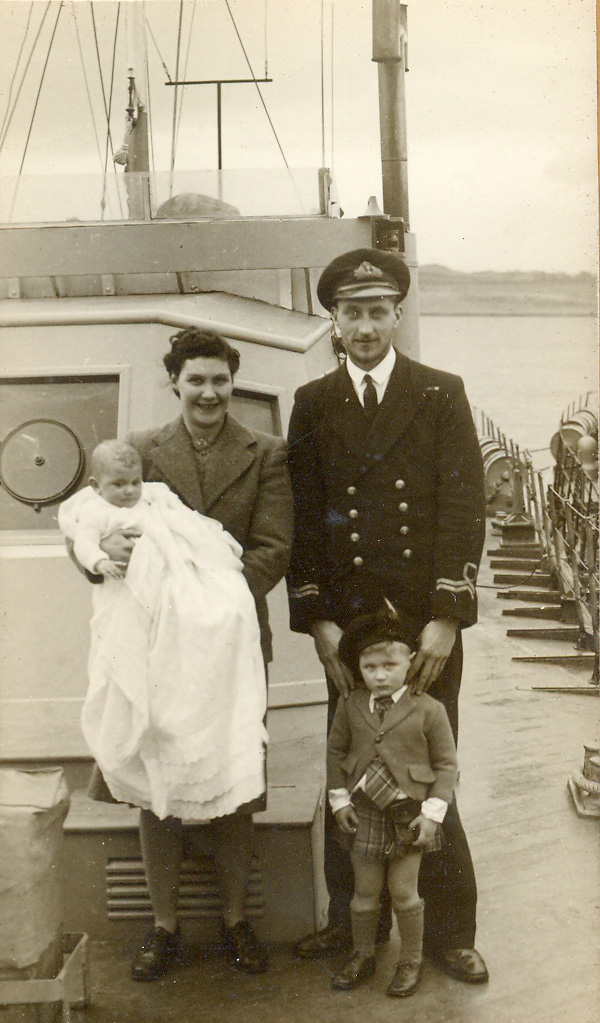
Memories of life in Scotland
Where ever Joan and Alf lived they would always make the most of their days. They entertained the family the best they could. Organising group picnics and outings, exploring their locations, the whole “gang” would play together. They would even take the goat on the picnic so that Jill would have a supply of milk. Letter’s written home from Alf to his Mum in Essex, detailed how they once travelled to Glasgow for a weekend break, so that they could by some tools and Joan and sewing machine. Travelling was very restricted during the war because of fuel rationing, but they always got by and carried on family life.
What's happened to Joan's runner beans!
Food shortages during the war years being common place and living in Scotland meant it was even more difficult to grow green vegetables, Joan, wanting to surprise Alf asked her Mother Winifred to send up by post some fresh runner beans as a treat for the family. You can perhaps understand Joan’s horror to come home one day to find her Scottish native friend, thinking she would do Joan a huge favour, would prepare the beans for her. “I don’t go much on your special runner beans” she said as Joan walked through the backdoor “They’ve got hardly and beans in them!” The Scottish friend had never seen runner beans before and mistakingly took them for a broad bean and assumed they needs to be shelled. She had collected just a measly amount of the tiny red beans from each bean and thrown away the best part away with the rubbish.
Barry falls into the Crinan Canal
One of the most scariest memories that Joan recalls living in Ardrishaig was when Barry was playing near the Crinan Canal and fell in. The Canal had extremely deep sides and notoriously dangerous for any swimmers to climb out. Joan was heavily pregnant with Jill at the time but jumped in the Canal herself to save Barry from drowning. Fortunately, there was a man passing by and was able to come to their rescue. Joan can still picture and feel the horrific moment when she recalled the event many years later.
Goats ate all the labels off the luggage on the Train home.
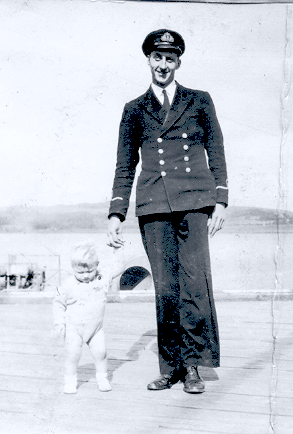
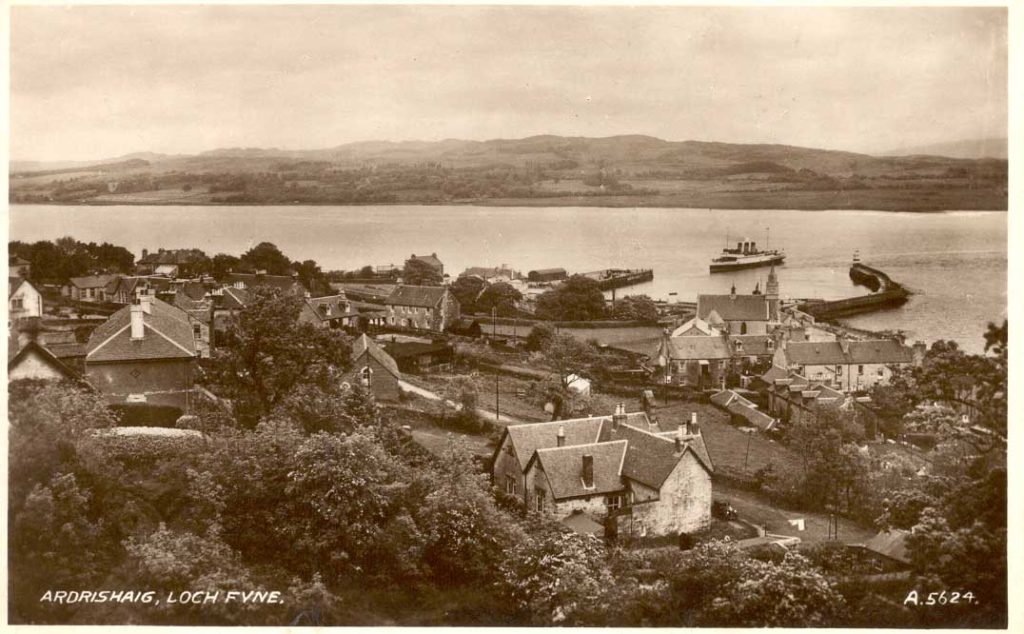
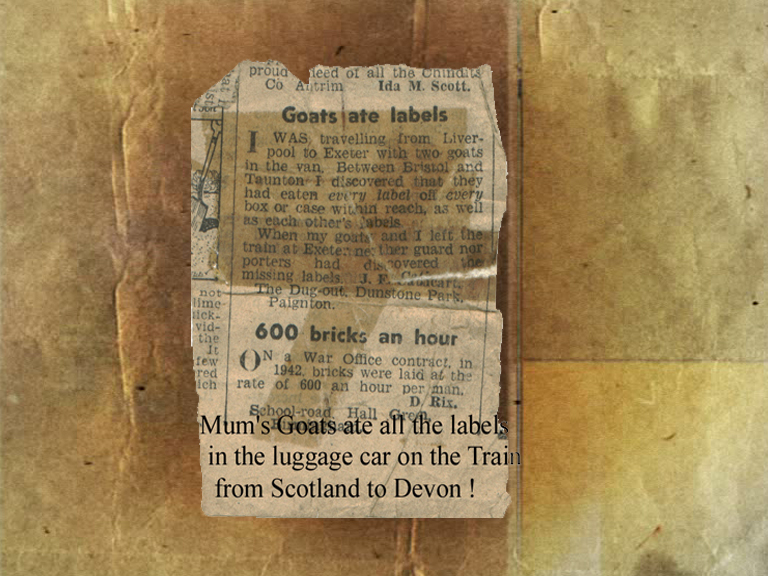
Upon leaving Scotland after the war, Joan arranges to pack up all their possessions and return home. The Goats were going to be sent to her father’s farm in Devon, any the only way for them to travel was to put them on the train. In those days the trains had luggage and goods carriages separate from passenger carriages. All Joan had to do was tie a luggage label onto each goat with the owners name and address and where they were heading. Well, Joan tried her hardest to tie the labels on the goats but as soon as she did, the goats having an appetite for paper, kept eating the labels off each other. In desperation, as the train was due to leave, Joan passed the labels to the Train Guard saying she was running late and didn’t have time to stop and tie them on. When the train arrived at Devon, not only had the Goats eaten their own labels, they had eaten all the other luggage labels on the train. A notice was put in the newspaper for anyone missing luggage to collect it from the lost property department. It was only when a friend saw this notice they were able to track the goats as they had gone missing. When they collected the goats, they were charged £6 for their keep. Joan said she had never seen goats look as fat as they did.
Returning after the war to live in Canvey Island Essex
After the war Alf and Joan returned to Essex. They lived on Canvey Island. Joan’s mother owned a house with a small shed at the bottom of the garden where they lodged at first. Winifred would sometimes live there and rent her own house out. Alf extended the living space to make room for the family. It was 1945 when Joan set up home once again with Barry and Jill and she was now pregnant with Penny, who was born in 1946. Dad was fishing back in Leigh on Sea and bought two new boats, the SeaHawk and Leona. Where ever Joan lived there would always be a managerie of animals. Somehow, animals would find her and be “taken in” then provided a good home. The house in Canvey Island was no exception. There were donkeys, goats, scary chickens (as they were known) cats and dogs. Penny remembers being told how she used to ask her cat, Tinkerbell to “switch it’s happy” on! This was because she wanted to hear the cat purring when she stroked it.
Family life was still growing. There were always plenty of friends to visit and play. Alf and Joan were great hosts and loved to entertain. This was where they made friends with the Wiseman family. They remained friends for many years after. Eventually, the Wiseman family emigrated to Australia in the 60’s taking advantage of the £10 tickets. They still remained good friends, albeit, long distance and more PenPals.
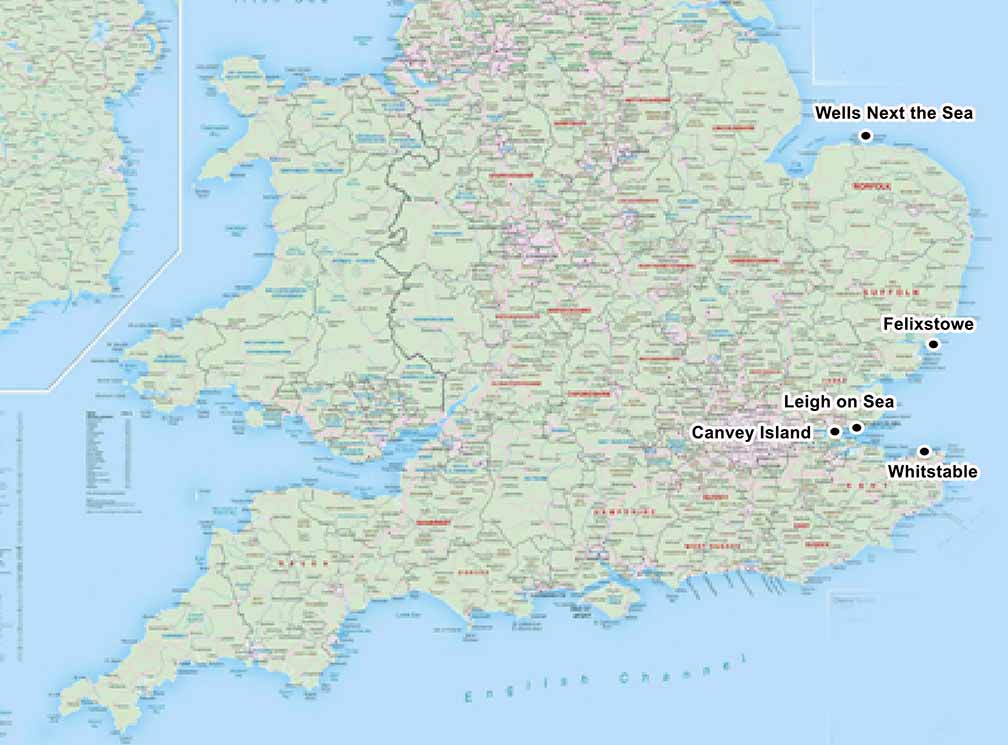
The map above shows the journey that Alf and Joan made taking the boats originating from Leigh on Sea and Canvey Island, across the Thames Estuary to Whitstable and then up to Felixstowe and Wells Next the Sea. They also travelled to Cornwall in the boats for a short amount of time when they were searching for Sprats.
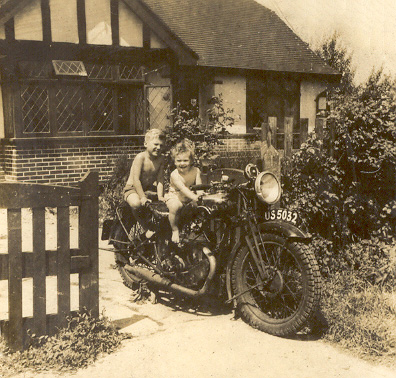
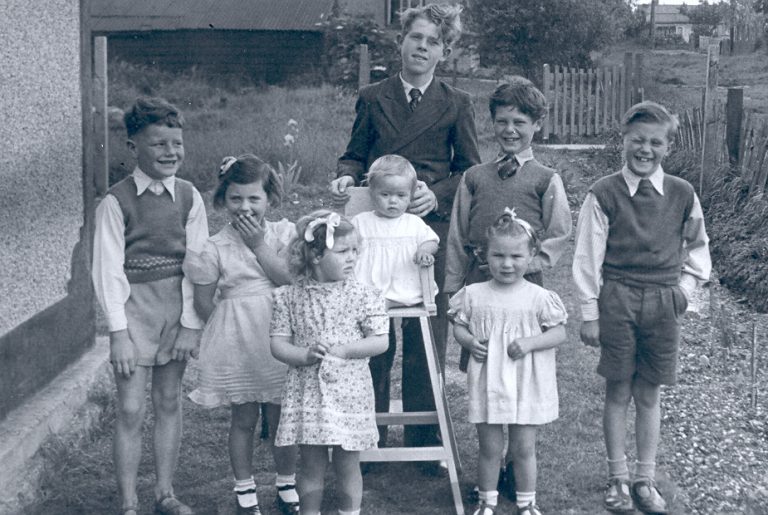
Friends and extended family at the house on Canvey Island. We are not sure of all the names now but Jill is the first girl on the left, Penny is the girl on the right with her Brother Barry beside her left. The others could be the Wiseman family. Sadly, children names and memory have faded.
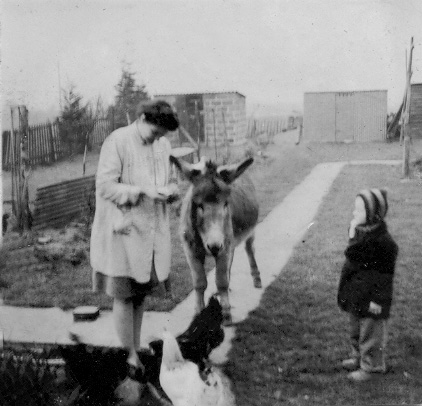

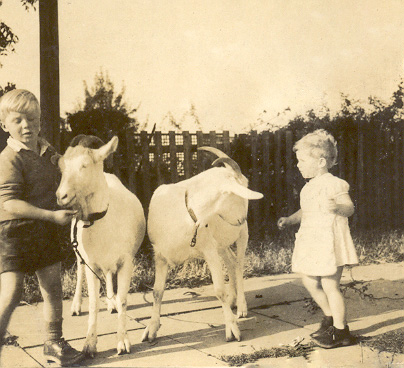
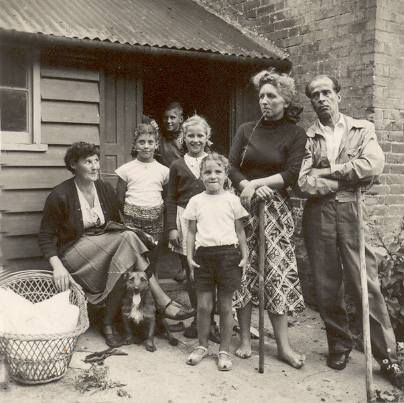
Crossing the Estuary to live in Whitstable
Alf and George Leggatt were fishing successfully with their new boats the Seahawk and Leona, when Alf decided to start pair trawling, holding the single net open with Otter boards and drag the net between them for Sprats. They would travel out to sea and further down the Thames Estuary as far as Whitstable. One night, sheltering from bad weather, they decided to stop in Whitstable harbour to save them returning home and coming back the next day. Whilst they layed up the night they had a look around the town and spotted a nice little cottage house for sale near the harbour. There and then, Alf decided he would like to buy the house and went back to tell Joan that they would be moving. Within months they were loading up all the furniture they had and all their possessions, onto the boats and sailed across the estuary to live Whitstable.
It was whilst they lived at 19 Island Wall, Whitstable that Kim and the Gail were born. Barry, Jill and Penny were now in boarding school and family life began a new chapter. Living opposite the beach meant the children had a great playground and Joan and Alf soon made many more lifelong friends. Joan would go across the road to the beach with the children after school each day and during the holidays meet up with friends of the family. The Wiseman family had also moved to Whitstable for the fishing industry. They also became friends the Lee Family, who also lived in Island Wall.
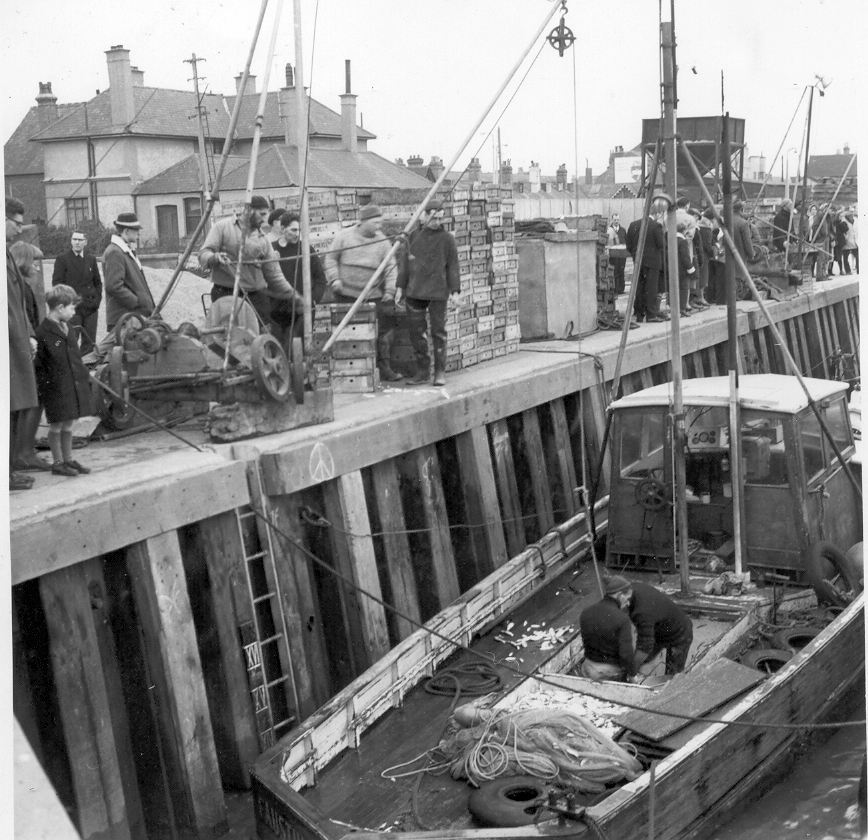

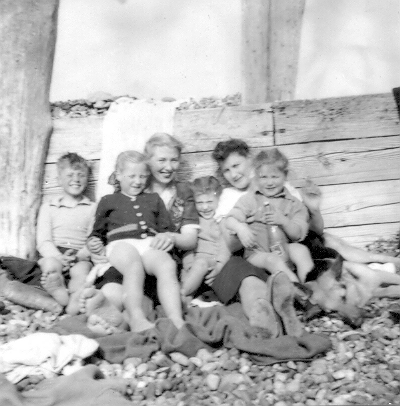
1953 The Whitstable floods
Whilst living opposite the beach had it’s plus side, it was not always ideal. The weather and tides meant they were plenty of flood alerts. In 1953, when the tides were at their highest the winds and rough sea broke the protecting sea walls and much of Whitstable was under water. Joan recalls assembling what she could in the home and moving the family up to the first floor. This is where they remained living for several days. The water levels reached the downstairs electric lights switches so there was no electricity. The only access to the home was through the bedroom window. Alf was fortunate that he owned a dingy and would help neighbours with supplie or evacuations.
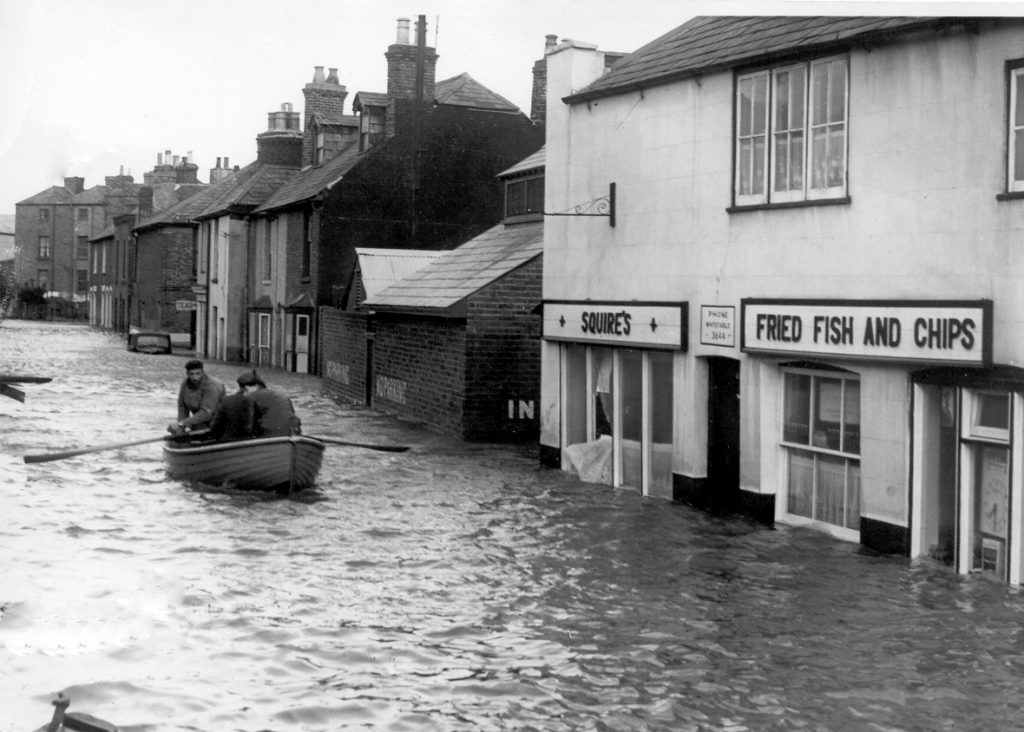
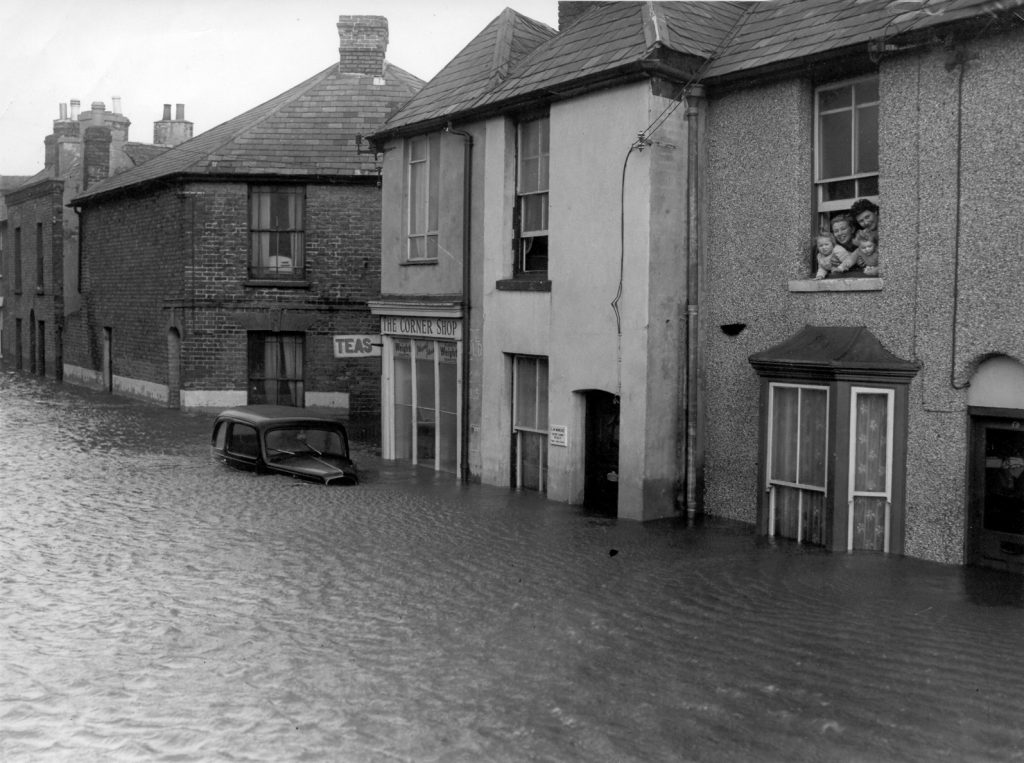
Family life in Whitstable - Listening to the radio and summer days
With Alf successfully pair trawling with his brother George in the Thames Estuary, Joan would fill her days looking after the family and also help Alf where she could. One of her roles was to listen to the Trawler band radio at a certain time of day. Alf would give a special coded call sign, a whistle, for her to hear and he would tell her how many lorries to order, what time to be at the quay for when the boats came in. The lorries in those days were coming as far away as Leeds and Dundee so if they had to wait to order them once they were ashore, it was obviously going to save them a lot of waiting time in the harbour. In later years, Alf had a factory built on the harbour which meant they were canned and processed locally. This factory employed 40/50 staff. Alf also invested in more boats which became a fleet of seven trawlers.
Summer days, the fishing season would slow down and Alf and Joan always make the most of their time entertaining family and friends. They would take the boats across to France and Holland for mini holidays. They converted a large family van for camping and travelled to Devon, Cornwall and Scotland. There was always a crowd whereever they went. Friends, families with multiply children. Alf and Joan would make up entertainment either by playing games like “wavio” (a version of hide and seek) Setting up treasure hunts, forage for flowers and berries and of course, there was always a swing!
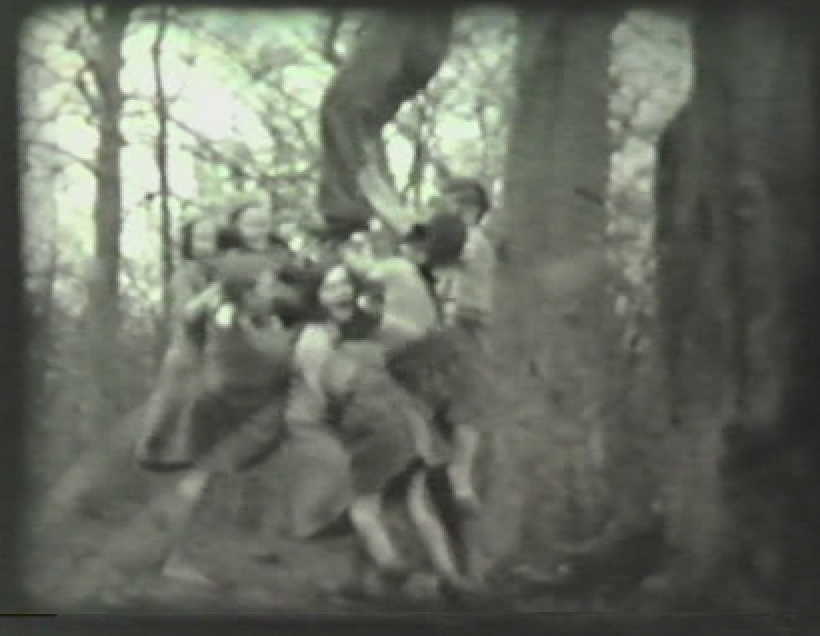
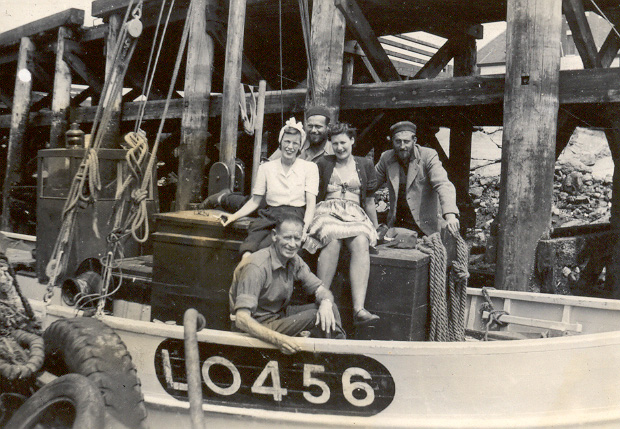

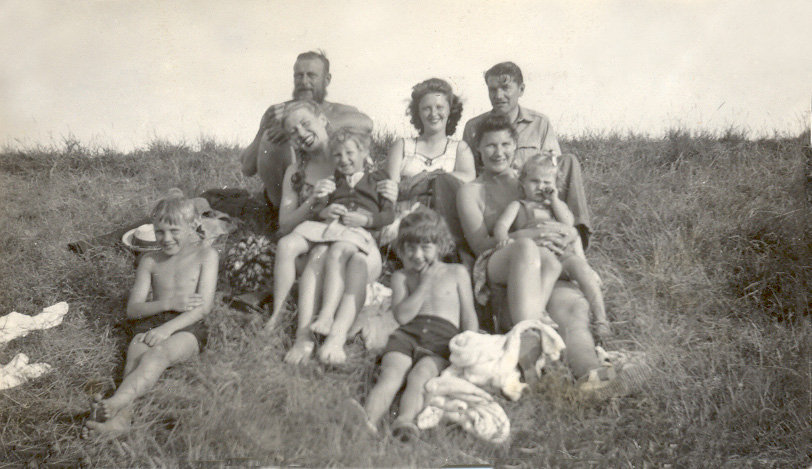
The Sprats just disappeared!
It was said that due to the success of Leggatt Pair trawling and the fleet of boats that were now operating from Whitstable harbour, they had caught so many fish and so quickly, there was no more to be had. The fish just simply disappeared, dried up. If the fisherman wanted to survive they needed to look further afield.
Finding the fish - Lowestoft and Felixstowe
Alf had experimented fishing for Pilchards in Cornwall (for Shiphams, a fish paste factory) This wasn’t very successful so he decided to try further up the coastline and head towards Lowestoft. Alf, using his Echo Sounder at this point, enabled him to find fish. Alf had used an Echo Sounder during the war in his Naval days to find submarines and he had the idea to convert it for fishing. This was considered state of the art fishing in those days as nobody had seen anything like this equipment in existence. (Read more about the Echo Sounder in the Fishing Years page) When he reached Lowestoft, Alf found large amounts of Sprats. He reported that he caught more Sprats in one day, than most fisherman caught in a whole season. Delighted with their catches they decided to stay in the area and headed for the Wash (North Norfolk Coast) to find somewhere to moor up. Coming across a small inlet, discovered a small town Wells-Next-the-Sea. This was to become their new home and start yet another chapter in their lives. The whole fleet moved up to Wells from Whitstable.
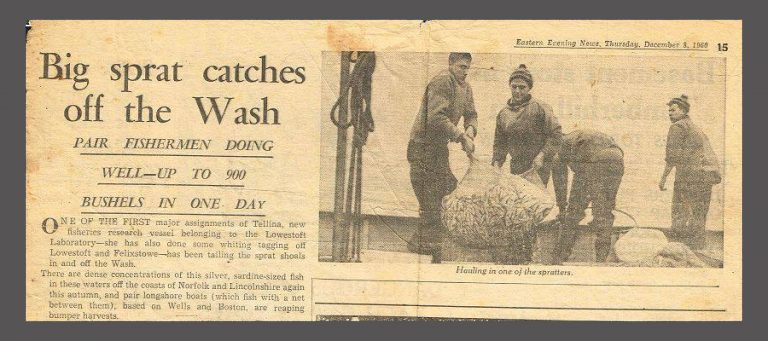
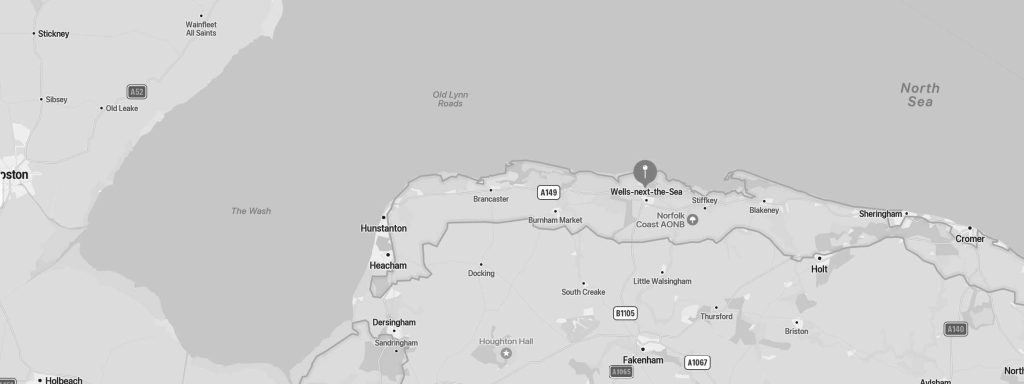
Moving to Wells - Next - the - Sea
Wells-Next-The- Sea is a thriving fishing town on the North Norfolk coast and still remains an area of outstanding natural beauty. The distinctive landmark of the seafront is the granary with its overhanging gantry on the quay, built in early 1900’s This has now been converted into flats, having ceased operating as a granary in 1990. There is a mile long bank that reaches down to the North Sea with a famous Lifeboat Station at the end. The Pine woods that grow in the sand and the salt marshes made it a wonderful place to grow up with a young family as Alf and Joan did. They would once again make new friends and become the hub of existence for the fishing fleet, the skippers and their families. Sprat fishing was very successful again, although the waters were notoriously dangerous due to the speed and currents of the rising tide. Sand banks at the entrance of the inlet made navigation very difficult with many fisherman fearing what was known as “The Bar” Sand bars that could ground boats out at sea. The RNLI were on constant alert. Alf and Joan’s eldest son Barry was an active member of the Lifeboat crew for many years. Barry went on to marry the Harbour Master’s daughter Jean Taylor and continued to live in Wells until the end of his days. His ashes were scattered over the “Bar” when he passed. Barry always feared that the “Bar” would get him one day.
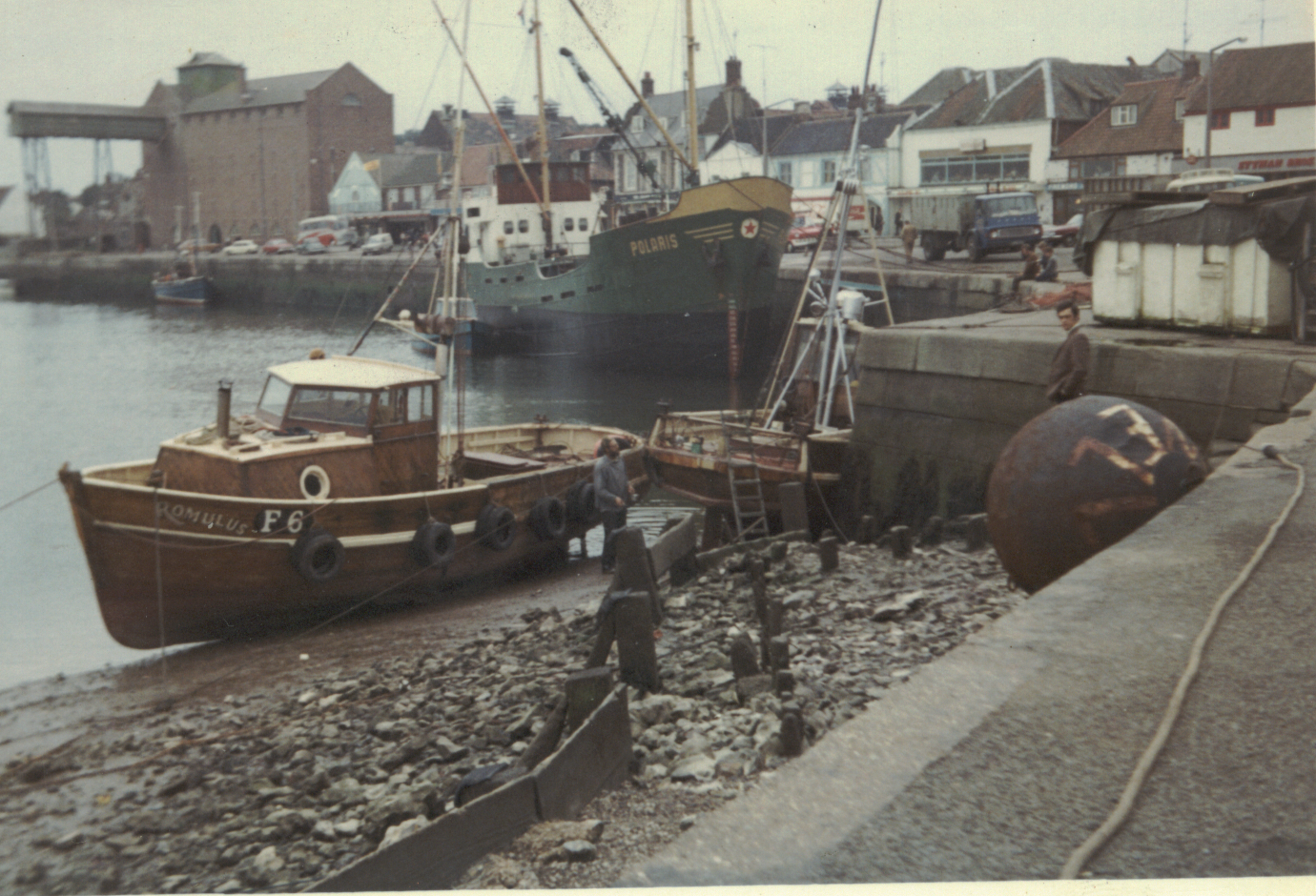
Converted the TTFN to a houseboat where Alf and Joan lived with their family
Alf Leggatt bought the TTFN (with an acronym Ta Ta For Now) whilst living in Whitstable for the purpose of carrying Sprats. The trawlers were catching more Sprats than they could hold and the TTFN was there to off load them. When the fish dried up and Alf no longer needed the boat in Whitstable, he had it converted to a houseboat and brought it up to Wells for the family to live in. It was moored at the East Quay just up the creek from Wells Harbour and provided a very convenient home for his family for 3 or 4 years. By this time, Alf and Joan’s eldest was marrying Jean Taylor and stayed in lodgings in Wells town. Jill, their eldest daughter was dating John Martin (fisherman from Whitstable and later son -in law to Alf and Joan). Jill lived on the TTFN sharing a small bedroom with sister Penny and Kim and Gail also shared a room under the wheelhouse. Joan would be a great homemaker where ever she lived and once again provide a unique setting for family life. Joan had great cooking skills and well know for her Oxtail Stews, Suet puddings and Norfolk Dumplings. With a fleet of hungry fisherman to feed, Joan’s little kitchen galley was turned into a masterful cuisine, it even had home made gingham curtains. Joan could turn her hand to almost anything. She made sure that all the family (extended family at that) was kept warm and fed.
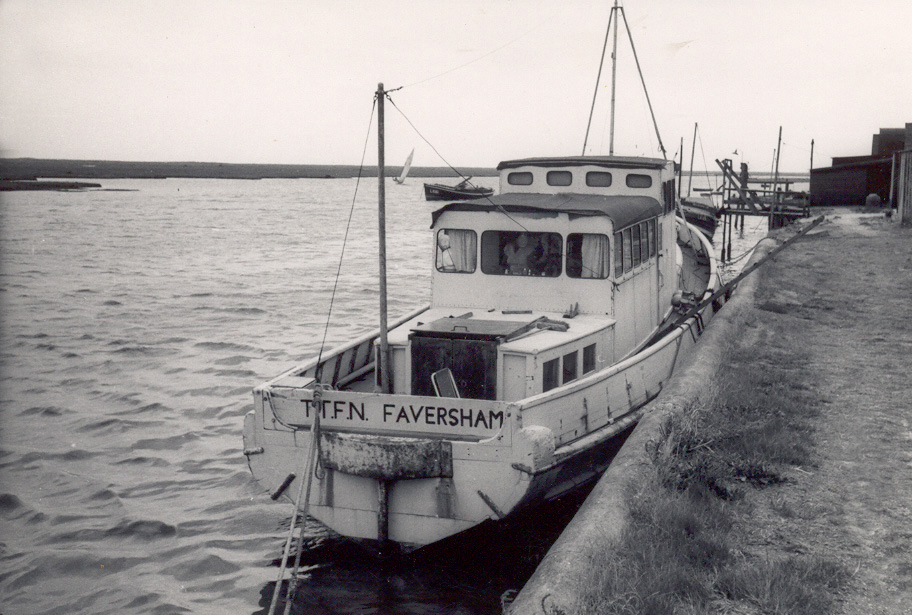
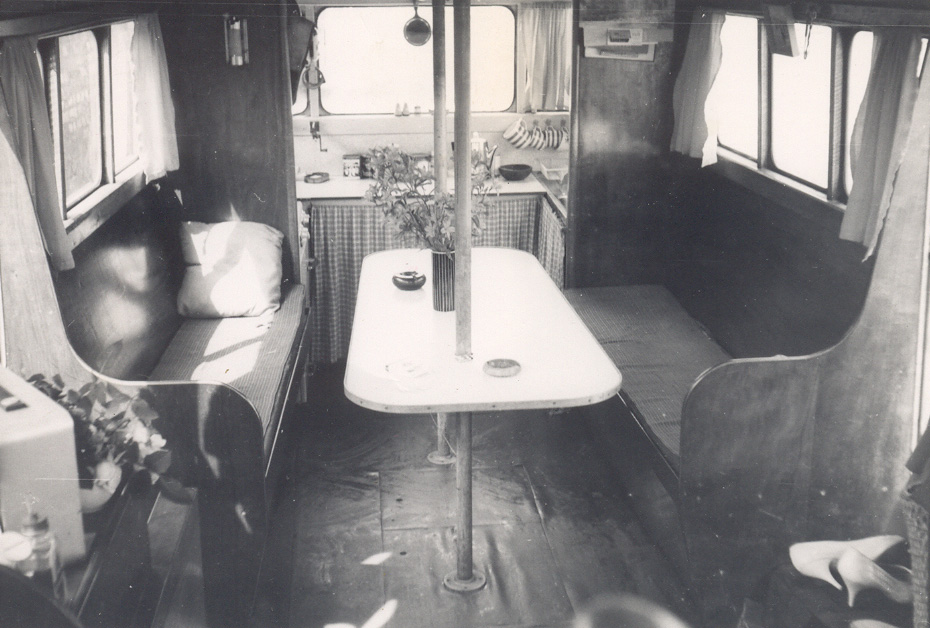
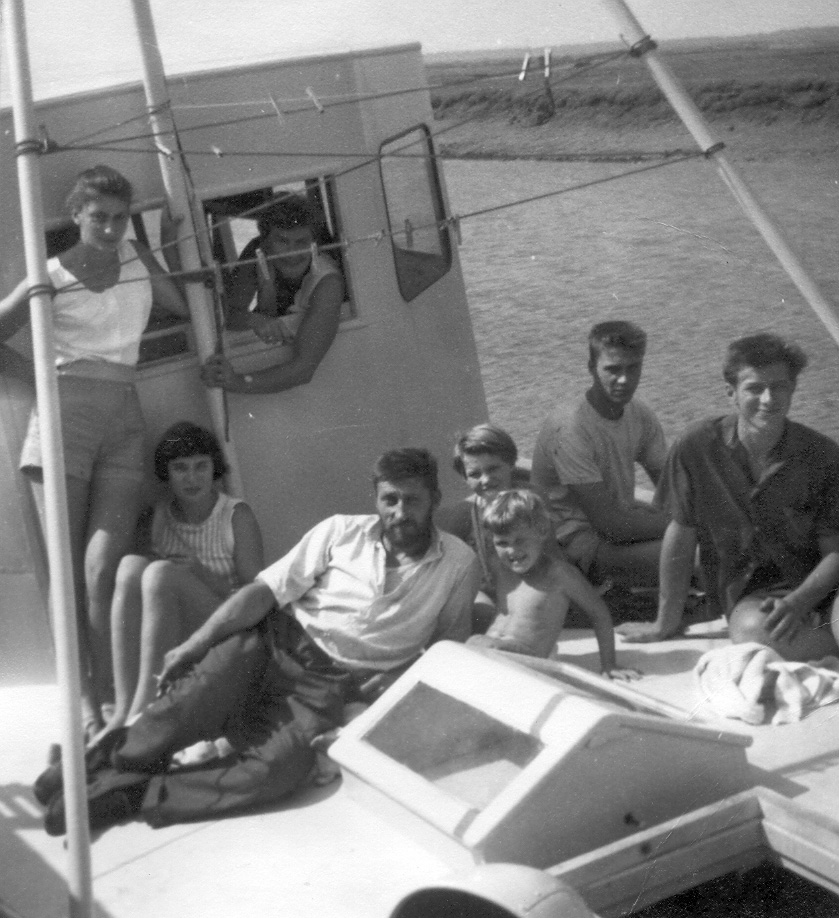
Life Aboard the TTFN
The picture on the left shows the family living space and very important kitchen galley at the end. The centre table, cleverly mounted on two poles, could be hoisted up and pinned to the ceiling when the boat was set for travelling. The floor boards under the table were lifted to expose the engine when it was running. The picture was taken from the wheelhouse and facing aft.
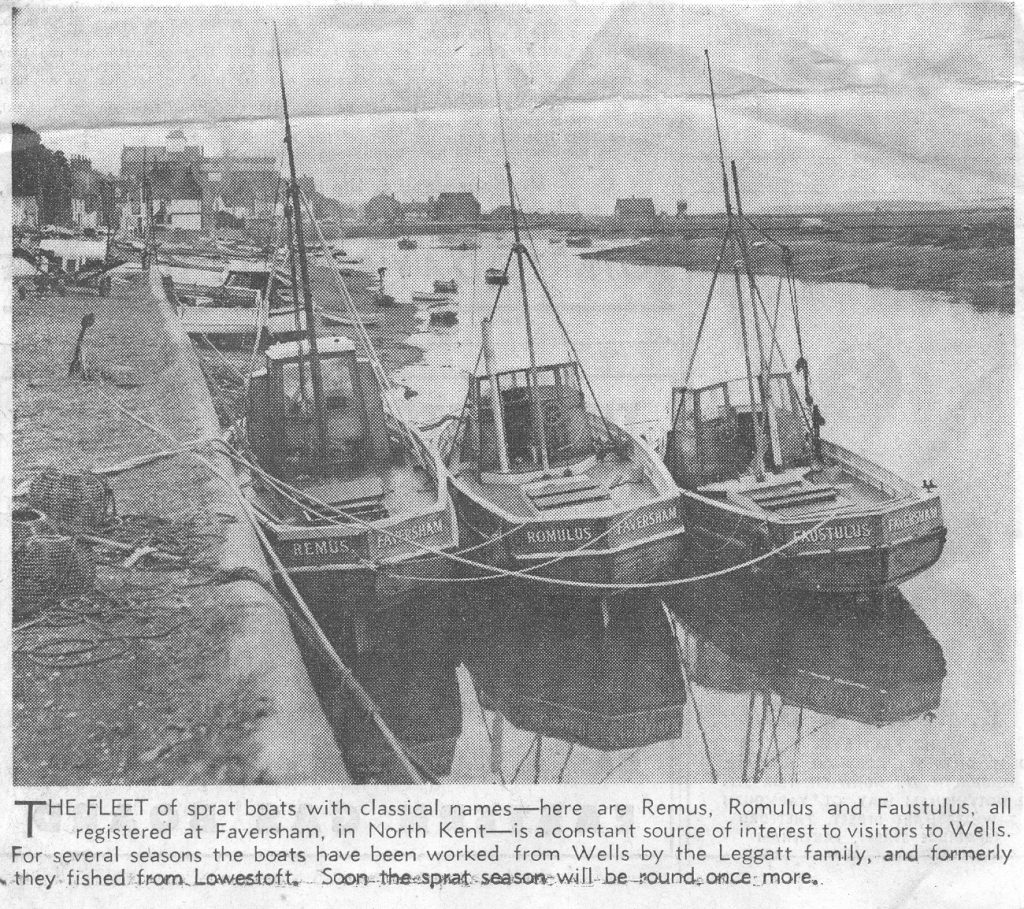
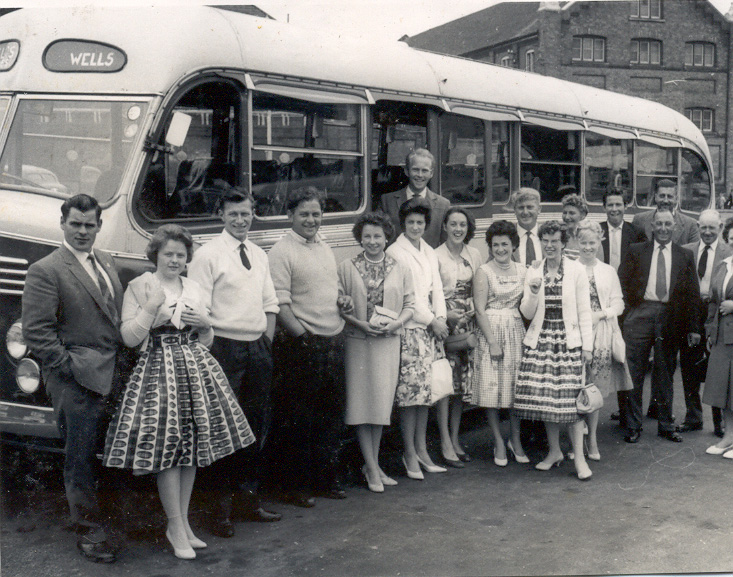
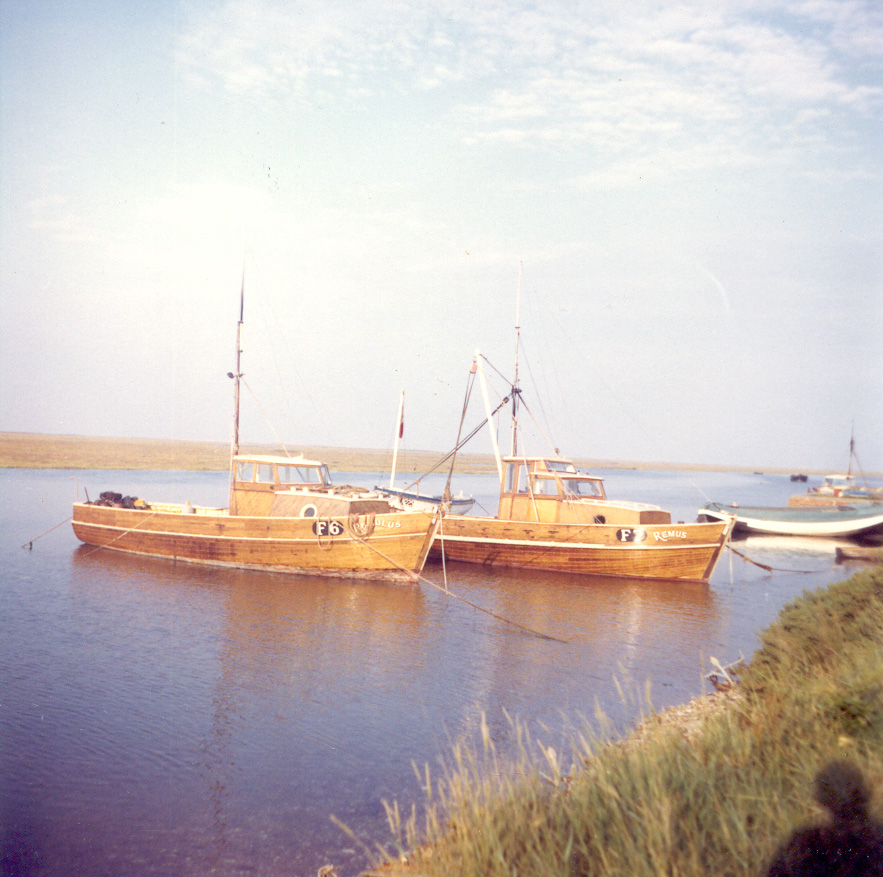
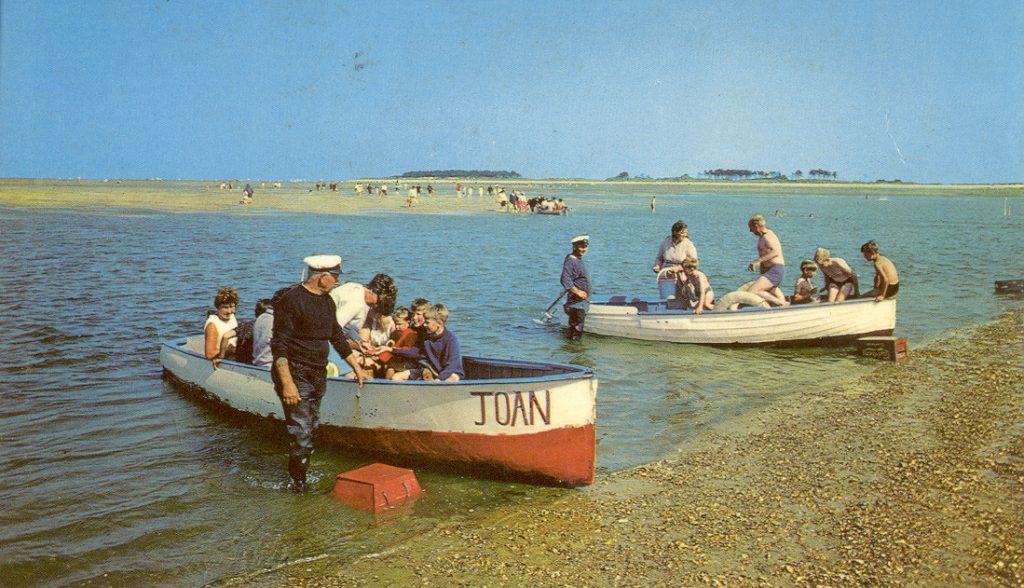
Boat trips across to the salt marshes for fun days out
Happy memories of living at Wells in Norfolk. There was opportunities to be taken across the creek to the salt marshes by local sailors or the Harbour Master himself, Frank Taylor. Frank’s family still live in Wells or nearby, to this day. The marshes were the equivalent of having a big back garden and families would take a picnic for the day, plenty of space to find a quiet spot and sunbathe or play, pick Samphire (a salty vegetable) to take home and cook for tea. It was a tidal area though so locals would take heed of times and tides.
Family life moves up and down country - travelling from Wells, Norfolk and Whitstable in Kent
It was the late 1950’s when Alf and Joan spent their lives moving with the fishing seasons, from Wells to Whitstable for a few months at a time. Alf would move with the family to follow the fish. The children were now all in boarding school, albeit starting at a very early age but Joan would follow Alf where ever he might be. So did some of the fleet although Barry married a local girl, Jean Taylor and stayed living in Wells where they brought up their family, Vicky and Sally. Jill was of working age and also stayed in Wells until she married John Martin, a Whitstable fisherman. George Leggatt (Alf’s brother) decided to also stay in Wells and made his home there with his wife Lily and their many dogs for the rest of their lives. He died in 1977.
Whilst travelling about the countryside in Kent, on a family day out, Alf and Joan discovered a small Village called Ickham. It was here that they spotted an old ruin of a house. It was The Old Rectory and the Twelve Century building had become an unofficial children’s play ground. Every, window of the 26 rooms had been smashed and the 3 acres of garden vastly overgrown with the grass knee deep high. Exploring the ownership, at that time the Church of England, Alf decided to make the church an offer. At first his offer was turned down and they laughed, he then increased the offer to £1500 (which was a considerable amount of money in those days) and the offer was accepted. A new era was about to begin.
Final Years The Old Rectory
Although we say “final” years, we mean many decades later. This was the last family home of Alf and Joan. The home where they spent many years restoring, building and developing new adventures. So much so, a separate page has been dedicated to the different chapters/stages of this new era, living at The Old Rectory
When the Leggatt family first moved into the house it was more or less only fit for camping style accommodation. Alf was still fishing in Whitstable and Wells but in the closed seasons and any periods of bad weather, Alf and Joan along with their extended family of Son-in -Law John Martin and a few fishing mates, would start dismantling the tumbled down building and restore all the parts they could. This involved all the family to help remove fallen chimney stacks on the roof, tear down ceiling and wall and carefully re=stack the bricks and materials so that they could be used again. Alf was known as being an eccentric man who was extremely practical. Health and safety was not in the forefront of his mind but he was able to “get jobs done” He would think nothing of heating one of the communal living rooms by shoving a whole tree through a ground floor window and into the fireplace to keep the place warm. Every so often he would give the trunk a shove to make sure the fire stayed alight and everyone kept warm. Again, bath night was very interesting. There would be a huge bonfire in the garden with a tin bath laid by. All the family would use the same water and Joan would say “cleanest one in first!”
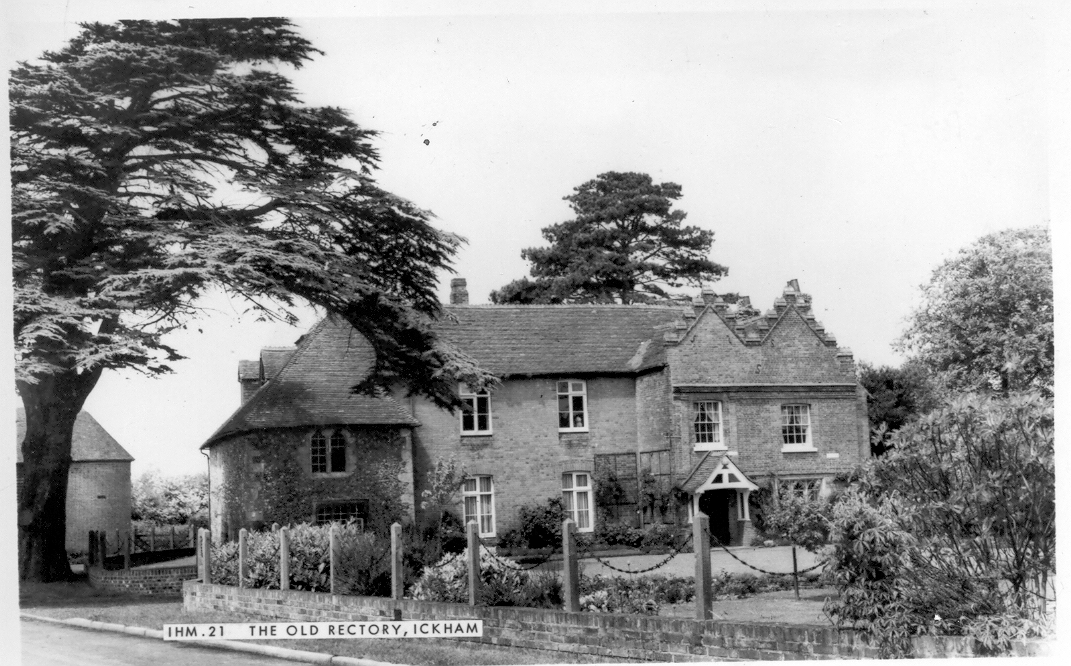
The village of Ickham is approx 5 miles from Canterbury and 12 miles from Deal and Dover. Still remains a beautiful village but sadly many of the old farm buildings have been pulled down of recents years and converted to modern residential dwellings. The postcard above was made as part of the village postcard series with The Old Rectory being one of the principle buildings of that era. This historical building ranged from the original 12th Century Norman Hall through to 15th Century and Georgian ballroom with a minstrel’s gallery on the first floor. There were later extensions over the 19th and 20th Centuries when the building was developed into a family businesses and finally became a Residential Home and Spa. Further reading about this can be seen on The Rectory Pages of this website and Ickham Pond
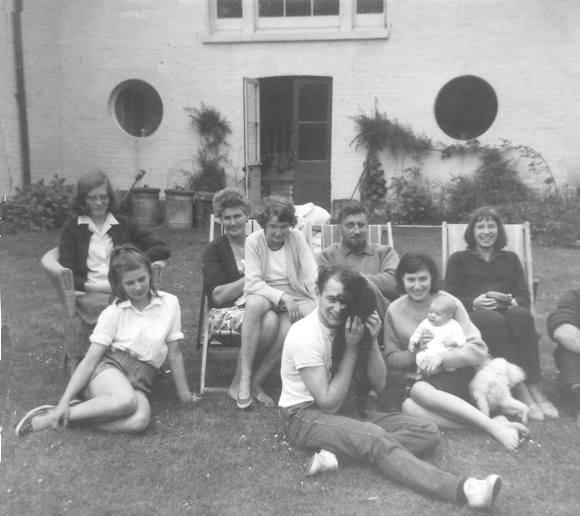

The Leggatt Family growing up at Ickham
Family and friends group gatherings were familiar events living at The Old Rectory. Alf and Joan, having said before, were always great entertainers and excellent hosts. There were numerous parties at Easter, Christmas, Bank Holidays let alone the Leggatt Family Weddings, Engagements parties and Christenings. More photos can be seen in the Photo archive pages in this Website.
Photos of family life whilst living on Canvey Island and Whitstable beach. Many dyas spent with the Wiseman Family, close friends of Alf and Joan and with children roughly the same ages as the Leggatt family. There was always a “gang” and friendly antics. Often Alf would sling up a swing for the children to play on, where ever they happen to be travelling. Albeit in the woods, on the beach, in the garden. There was even a swing in the back of the old blue van. The van you can see in a photo above had “We need our Harbour” written on the side of it. This was one of Alf’s campaigns when Whitstable harbour was threatened with closure in the 1953. Alf saved the harbour when he started the British Fish Canners company in 1956 and brought a new industry to the local area. The Harbour has thrived ever since and now famous for it’s Oysters and Shell Fish.